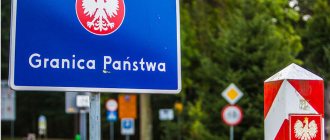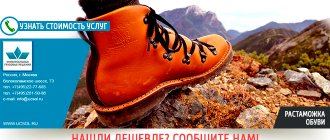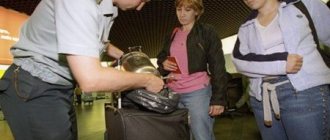HomeCustoms payments Customs VAT
Customs VAT is a payment that is regulated by the legislation of the EAEU (Article 46 of the EAEU Labor Code). It is collected by customs authorities for goods moved across the customs border. Despite the efforts made to harmonize tax legislation, VAT in each EAEU country has its own characteristics. For the state, collecting VAT is an effective way to replenish the budget; its collection provides significant and stable revenues to the budget of the Russian Federation. In addition, customs VAT protects domestic producers, providing them with competitive advantages. This tax is subject to national tax laws.
Customs payments
customs duty
Customs duty
Customs excise duty
VAT rates according to the Commodity Nomenclature of Foreign Economic Activity
The commodity nomenclature of foreign economic activity (TN FEA) is a special classifier of goods developed by the member countries of the EAEU. It is a table of code values, each of which relates to a specific type of product - a HS code. VAT rates are tied to the HS code. This code consists of 10 digits. The customs declarant, having determined the product code, understands the meaning of the VAT rate. Exact compliance of the selected code with the nomenclature is one of the most important tasks of the customs declarant.
Do you need to determine the HS code? Don't know what fees you will have to pay at customs? – We will help you!
How to correctly apply the estimated VAT rate
The use of the estimated VAT rate - 18%/118% or 10%/110% - is stipulated in Article 164, paragraph 4 of the Tax Code of the Russian Federation and is allowed in the following situations:
- when issuing an invoice for the received advance payment;
- when calculating VAT by a tax agent;
- when using an assignment agreement (assignment of monetary claims).
The calculation assumes that the amount of the advance received or the monetary claim accepted already includes the amount of tax, which should be calculated by simple arithmetic operations.
The most common option for isolating the VAT amount is to draw up an invoice for the advance received.
Customs VAT rates
Customs duty and VAT rates differ. Customs VAT rates apply to broader product categories and are regulated by the tax legislation of the Russian Federation (Article 164 of the Tax Code of the Russian Federation). Customs VAT rates for the year can take three values: 0%
— tax exemption,
10%
— preferential taxation,
20%
— full taxation.
| VAT rate | Application |
| There are goods the import of which into Russia is exempt from tax, for which VAT will be 0 percent. Before calculating VAT, you need to find out whether this product is eligible for tax exemption and clarify under which customs procedure the product is placed (Article 150, 164 of the Tax Code of the Russian Federation, Government Decree No. 1042 (as amended on March 20, 2018) On approval of the list of medical goods )). To be exempt from this tax, you must provide documents confirming the intended purpose. | |
| 0% | consumables used for scientific research not produced in the Russian Federation;
When placing goods under customs procedures (Article 151 of the Tax Code of the Russian Federation): |
| In some cases, according to Article 164 of the Tax Code of the Russian Federation, the VAT rate will be 10% | |
| 10% | 1) Food products:
2) Products for children:
3) Periodicals, with the exception of periodicals of an advertising or erotic nature.
|
| 20% | In all other cases (clause 3 of article 164 of the Tax Code of the Russian Federation). |
Who pays VAT
A scheme may be born in the mind of the average person, suggesting that this tax does not concern him at all. Well, the entrepreneur pays himself, and let him pay. But this is a mistaken opinion. Because in reality, the entire amount of this tax is ultimately paid by the buyer himself. To understand why this happens, let’s look at a simple example and see what stages the emerging value added tax goes through.
- One company orders material from another company to make its product from it. She pays for this material. VAT will be applied to this amount of the cost of the material that the company paid.
- Next, this company produces its product from the purchased material, and then decides what the cost of the finished product will be? So that you yourself don’t end up at a loss, and your clients don’t run away from inflated prices? First of all, take the amount of money that was spent on the production of a unit of a new product. The tax amount is also calculated, but is recorded as a “tax credit”.
- Next, the company needs to decide how much the product will cost the end customer. Here the cost of the goods is added up, excise taxes are calculated, the share that after the sale will go to profit is entered, and VAT is added. That is, it will already be included in the price of the product that the consumer will pay upon purchase.
- When a product is sold in a certain quantity, the company sits down to calculate profits. From the money received, 20 percent of the tax that the buyer has already paid is calculated. And this money is spent on tax obligations to pay VAT.
Here is a simple diagram that shows that the price of a product in a store already includes value added tax. And if it were not taken into account, the product would cost less. Even new franchises that want to enter the market with a new product produced personally include VAT in the price of the product, because they pay it when purchasing material for production.
To calculate VAT you need:
- Correctly determine the product code according to the Commodity Nomenclature of Foreign Economic Activity;
- Determine the tax rate using the code;
- Determine the import duty rate;
- Determine the excise tax rate;
- Calculate the customs value of goods and excise tax;
- Using the formula, we get VAT = (Tam St. + Tam. St. + Share) x VAT rate%.
Example of VAT calculation
Example 1: Goods are imported for an aircraft plant: Pipes and tubes made of aluminum alloys without further processing after extrusion for the production of aircraft engines. Product code 7608208902. VAT = 20%; Import duty = 0%; Excise tax = 0%; Customs value = 78,000 rubles. VAT = 78,000 x 20% = 15,600 rub.
Example 2: An individual entrepreneur imports a batch of strollers from Israel for people who are unable to move. HS code 8713100000. The stroller is a vital medical equipment (preferential product). Import duty = 0, goods are not subject to excise tax, VAT = 0%. To apply these rates, it is necessary to provide documents confirming the intended purpose of the stroller, issued by the federal executive body, and a registration certificate. If supporting documents are not provided, then VAT = 20%.
Why is VAT needed?
The very name of the tax implies that a share of the added value arising at all stages of the sale of one’s own products, goods purchased for resale, or services provided is withdrawn from the budget. This is how the main function of the VAT is implemented - fiscal .
If you trace the chain from the manufacturer of a product to its final buyer, it turns out that the process of shifting the tax will end only at the moment the product is purchased by the consumer who is the last in this scheme. The regulatory function of VAT is manifested in the formation of the consumer market, since the real payer of the tax is not an LLC or individual entrepreneur, but a living buyer.
VAT, as a regulator of the consumption market, cannot be too high, since in this case, due to extremely high prices, the demand for goods and services will fall. This factor will invariably lead to a weakening of the economic position of both individual business entities and industries as a whole.
How is VAT paid to customs?
Individuals
are not VAT payers, except in certain cases.
Legal entities
In order to pay VAT and/or other customs payments, you must register with Customs and receive a Unified Personal Account (USA). To avoid unnecessary costs and delays at customs, money must be transferred to the account in advance in the form of an advance payment. You can transfer money by submitting a Payment Order. There are instructions for filling out the Payment Order. In case of overpayment, you can submit a refund request within 30 days. VAT and other payments can be paid without advance payment at the time of filing a customs declaration using the “Round” or “Customs Card” payment system.
To pay VAT, the Budget Classification Code (BCC), consisting of 20 digits, is indicated in the payment instruction in field 104. KBK determines the address and purpose of the payment for payment of the fee and VAT, KBK takes the value: 15311009000010000180. Field 107 code of the customs authority administering the payment, consisting of 8 digits without spaces, dots and letters, the code does not have a date format. For ELS, in field 107 the code value is indicated: 10000010.
Documents and information for payment and VAT refund at customs
- List of documents for registration of a Legal entity at customs (View)
- List of documents for registration of an individual entrepreneur at customs (View)
- List of correspondence codes for types of payments paid at customs, KBK (View)
- Payment order for payment of VAT to customs (View)
- Instructions for paying customs duties (Watch)
- Application for refund of advance payments, including VAT (View)
- Application for refund (offset) of overpaid (collected) payments (See)
- Application for return (offset) of cash deposit (See)
When the tax office may refuse to apply a preferential VAT rate
When selling packages that contain groups of goods with different VAT rates, the use of a reduced percentage may lead to justified claims from the tax authority.
Example 1
To increase sales, trading organizations often use a sales scheme for self-assembled kits, where goods are subject to VAT at different rates. For example, on the eve of the New Year holidays, a huge number of children's gifts appear on sale, containing sweets and toys. Confectionery products (sweets) are subject to VAT at the rate of 18%, and children's toys belong to a preferential group of goods.
The Ministry of Finance and the Federal Tax Service considers the use of a 10% VAT rate on a New Year's gift set when setting the price to be an illegal action, since the list of codes of the Government of the Russian Federation No. 597 dated June 18, 2012 does not contain such a position.
A similar situation may arise, for example, when selling specialized magazines with the provision of an additional service - access to a web resource or electronic media. In this case, the 10% rate applied to printed products can only be applied directly to the magazine. The service of virtual news publication should be taxed at the standard rate of 18%.
Keep in mind ! To avoid tax claims when selling sets with different VAT percentages, it is advisable to indicate in the documents and on the price tag the individual product items included in the set.
Example 2
Sales of bakery products are carried out using a reduced VAT rate of 10%. When updating the product range, you should be careful about the names of new products. For example, the term “pizza” is not in the list of OKP , therefore, despite actual compliance with the letter of the law, for formal reasons the manufacturer must apply a rate of 18% when selling pizza.
Conclusion: It is advisable to choose a name for a new product for which it is planned to apply a preferential VAT rate, being as close as possible to the terms used in regulatory documents - lists of OKP approved by the Government of the Russian Federation.
Simple names will not give tax authorities grounds to refuse to use the reduced tax rate.
VAT on export of goods
A zero VAT rate has been established for the export of goods from Russia; in addition, the exporter can compensate for the VAT paid when purchasing goods. This is done to avoid double taxation and develop foreign trade activities.
For example,
The exporter purchased goods in Russia in the amount of 5,000,000 rubles and paid VAT at the VAT rate of 20%, the VAT amount was 1,000,000 rubles. He sold the goods he exported for 5,500,000 rubles, with a VAT rate of 0% (Article 164 of the Tax Code of the Russian Federation). Since the exporter works under OSNO and is a VAT payer, he has the right to a refund of the VAT paid. To do this, he must provide documents (Article 165 of the Tax Code of the Russian Federation) confirming the fact of export of goods and payment of VAT. After a desk audit, a VAT refund will be issued.
Exemption from calculation and payment of VAT on food products
Companies and individual entrepreneurs are exempt from VAT in any of two cases:
- In accordance with paragraph 5. paragraph 2. Art. 149 of the Tax Code of the Russian Federation - if they produced or sold products in the canteens of educational or medical institutions. And yet, then the taxpayer is also obliged to independently justify the exemption from the calculation and payment of VAT. To do this, in accordance with the letter of the Ministry of Finance of the Russian Federation dated December 3, 2014 No. 03-07-15/61906, he must provide licenses for the provision of medical or educational services.
- If the taxpayer is in a special regime and is exempt from working with VAT. In accordance with paragraph 2 of Art. 346.11 of the Tax Code of the Russian Federation, a taxpayer using the simplified tax system is exempt from paying VAT in all cases, except for the following: products are imported into the territory of the Russian Federation or such taxpayer is a tax agent. Individual entrepreneurs on a patent are also exempt from paying VAT, unless they conduct activities that are not covered by the PSN, do not import products into the territory of the Russian Federation and do not carry out transactions taxed under Art. 174.1 Tax Code of the Russian Federation.
The cost of food products exempt from VAT is reflected under code 1010232 in section 7 of the VAT tax return.
Keep VAT records in the Kontur.Accounting web service: there is a built-in system for checking VAT calculations. The service will tell you which documents need to be added and which transactions to check in order to reduce the amount of VAT and avoid fines. In Accounting - simple accounting, payroll, reporting, integration with banks and cash desks. The first two weeks are free for all newbies.
Refund of customs VAT when exporting goods
Participants in foreign trade activities have the right to deduct VAT paid by them when importing goods into the Russian Federation only if the exporter is a VAT payer. If the goods are intended for transactions that are subject to VAT, and they are accepted for accounting. A deduction can be made if the goods are intended for operations that are subject to VAT. To confirm your right to a tax deduction, the following documents may be required:
- foreign trade contract with a foreign supplier;
- invoice for payment from the supplier (invoice) invoice;
- customs declaration (copy);
- payment order, bank statements, certified duplicates of payment orders.
The listed documents must be stored for four years.
If an organization is not a VAT payer, then, according to the law, it will not be able to receive a deduction. These are organizations that have chosen tax regimes: simplified taxation system (USNO), unified tax on imputed income (UTI), unified agricultural tax (UST).
When and who is required to pay VAT?
The definitions given by the Tax Code of the Russian Federation fix the indispensable participation in the formation of the budget at the expense of VAT in specific situations:
- provision of services, sale/transfer of goods or the right to use assets under any form of agreement;
- performing construction, installation or equivalent work;
- the above-mentioned works, services or transfer of valuables for personal use;
- importation of goods or products from abroad.
Subjects for mandatory payment of VAT are:
- organizations or individual entrepreneurs engaged in commerce or production using OSNO;
- non-profit companies – in case of realization of rights to property;
- banking and insurance structures;
- separate divisions and branches of organizations that sell services or products;
- customs intermediaries.
Services for calculating VAT and customs clearance of goods
Our company “Universal Cargo Solutions” provides services for clearance of goods at any customs office of the Russian Federation, selection of HS codes, determination of the customs value of goods, calculation of customs duties required for payment, including VAT. If necessary, we have the ability to promptly pay customs duties for the client and carry out prompt customs clearance or customs clearance of goods at customs, which significantly reduces time and costs.
We are confident that we will become your reliable partner at customs!
Find out customs VAT or order a service
Options for using a reduced rate of 10%
A 10% VAT tax rate is used in cases where strictly defined product categories of a social nature and only one type of service are subject to sale - air transportation within the country.
The Tax Code allows the use of a reduced VAT tax rate for sales transactions with the following products:
- food group of goods, excluding delicatessen products;
- subcategory of children's goods, except sports shoes;
- stationery for school purposes;
- periodicals, textbooks and scientific literature;
- goods related to medicine.
It is the question of eligibility for inclusion in a preferential group with a reduced VAT rate that raises the greatest number of questions among taxpayers and fiscal authorities.
How to check the legality of the 10% VAT rate
If a product is purchased for resale, then questions about the possibility of applying a reduced VAT rate, as a rule, do not arise. All products are supplied according to accompanying documents, including invoices, which indicate the applicable tax rate.
The situation is more complicated when an LLC or individual entrepreneur independently produces commercial products, which, according to formal criteria, are subject to preferential VAT taxation. In such situations, it is advisable to adhere to regulatory documentation - lists of product codes established by the relevant Government Decrees in the latest edition.
These registers indicate codes and names of product groups from the preferential tax list. The OKP code is selected in the All-Russian Classifier and is confirmed by a certificate or declaration of conformity.
You should know: If the manufacturer cannot find the product being sold in the list of codes, then it would be more reasonable to indicate the general VAT rate - 18%. Otherwise, there is a risk of additional tax assessment during an audit by the fiscal authorities.
Bottom line
Knowing what VAT is is important for anyone. Knowing how to calculate it is important for those who are directly involved in filling out documents and submitting reports to the tax department. Being unaccustomed to doing this using formulas is difficult and tedious. Therefore, to check yourself and your counterparties, there are many electronic resources where you can find a VAT calculator that will calculate it for you in two clicks. The main thing is to remember that attentiveness is an important component in the matter of VAT, and you cannot be late in submitting your reports to the tax office.
VAT 18%
All other types of goods and services are calculated at the basic rate of 18 percent, these include:
- provision of services,
- sale of goods that are not subject to the 10% VAT rate,
- import and sale of products that are not subject to the 10% VAT rate.
Everything from receiving goods to printing price tags
The user of the Dreamkas Account accepts goods with an invoice - the service automatically adds them to the database for accounting balances. Immediately after this, you can set prices, discounts and print price tags.
VAT 10%
Services and goods of social importance - upon sale will be calculated at a rate of 10 percent. These include:
- food products, such as dairy and meat products; eggs, butter and margarine; cereals, flour, pasta, bread, and crackers; diabetic products for children; vegetables and ice cream,
- childen's goods,
- school office,
- periodicals,
- scientific and educational literature,
At a rate of 10%, goods are sold whose codes are indicated in the OKP List. To confirm the rate, you need a certificate of conformity for the product.
Tax credit and tax liability
We looked at the formulas, but how much should we pay to the budget for this tax, you ask. Let's finish off the topic with jeans and resolve this issue, and at the same time we will understand such components of the concepts of value added tax as credit and liability.
We still bought jeans for 120,000 rubles. Of which 20 thousand were paid as VAT for the supplier. We have an invoice from this supplier for our batch of jeans, where it is written in black and white that the price of the goods without VAT is 100,000 rubles, the amount of VAT is 20,000 rubles, and the total cost is 120,000 rubles.
Next, we set aside the VAT figure during calculations and remembered it as a tax credit.
A tax credit is the amount by which at the end of the reporting period it will be possible to make a tax deduction from the tax liability - that is, to reduce the amount of tax we pay to the budget. And what we will have to pay to the budget is a tax obligation.
Let's look further at the jeans.
In reality, we will subtract the VAT we have already paid from the amount of 120,000 rubles to form our price. That is, the amount will be the same 100 thousand rubles.
Let's say, having included all other cost and expense factors, and adding the percentage of the desired profit, we received a price of 200,000 rubles. This is exactly how much our jeans will be sold for in our store to the end consumer. And it is from this amount that our tax liability will be deducted - that is, the tax that we must pay to the budget.
From 200 thousand rubles, according to the formula or calculator, it turns out that VAT is equal to 33,333 rubles. This is our tax liability. But! After all, we also have documents that confirm our tax credit of 20,000 rubles (that is, the fact that we have already paid 20 thousand in the form of value added tax). This means that we can subtract 20 thousand already paid from 33 thousand. In total, we will get 13 thousand rubles, which we will pay after selling all 10 pairs of jeans (let’s say this happened in one reporting period).
From 200 thousand rubles, 13,000 went to the budget from us in the form of tax. But we must not forget that our supplier also paid his 13 thousand into the budget, which he received from us when purchasing the jeans initially.






